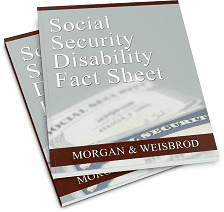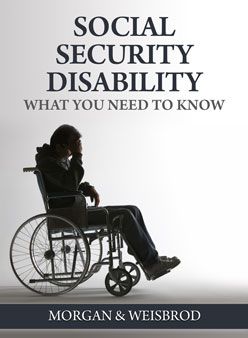When looking at an Administrative Law Judge’s (ALJ) decision, there are several sections. The structure of a decision is essentially the same whether it is Favorable or Unfavorable.
The “Jurisdiction and Procedural History” section summarizes how the claim got before the ALJ. It lists the date you applied; what date you alleged the disability began; the dates your claim was previously denied; and who was present at the hearing.
The “Issues” section defines what the ALJ must decide. Is the claimant disabled; and did that disability begin within a time which allows the award of benefits? The ALJ usually includes a short sentence at the end which answers those questions. The rest of the decision sets out how the ALJ made that conclusion.
The “Applicable Law” section sets how the ALJ makes their determination. The section summarizes the five-step evaluation process. We go over those steps with our clients before the hearing, so they fully understand what type of determinations the judge has to make. The judge will go through the applicable law, the five-step process, and the findings. The first finding is whether you are dealing with a regular disability (what we call a “Title II” claim) or Supplemental Security Income (SSI) disability claim. Under a regular disability claim, the date last insured is the first determination to be made. When looking at those claims, they are looking to see if the person established disability within the date last insured.
The ALJ then proceeds to the five-step evaluation. The first question is whether the person has done any work for pay above the substantial gainful activity amount, which is the set dollar figure per year. Next, if an individual has stopped working, the ALJ determine if the claimant has a medically determinable physical or mental impairment that is severe. A severe impairment affects an individual’s ability to perform work-related activities for longer than one year.
Next, the ALJ determines whether the individual has an impairment that meets or equals a listed impairment. Social Security has several conditions they consider presumptively disabling. The listings are generally reserved for more significant impairments; terminal cancer, amputations, and dialysis to name a few. Generally, the cases that go to hearing level do not meet or equal a listing. Those cases are disposed of at the initial or reconsideration level.
Step four determines whether the claimant can go back to any of their past work. Prior to reaching that step, there is an intermediary step where the ALJ determines the claimant’s residual functional capacity (RFC). The ALJ determines what the person can still do and is expressed in terms of exertion and non-exertion activity. The exertion component states how long the claimant can sit, stand, walk, and how much they can lift and carry. The non-exertion component assesses their ability to use their arms and hands, postural activities (balance, stoop, couch, crawl, and kneel), maintain concentration, get along with others, accept criticism from supervisors, and deal with changes in a routine work setting.
The ALJ looks not only to the medical records but also to the statements and the testimony of the claimant at the hearing. This includes determining if their complaints of pain or limitations are consistent with the medical evidence. The more consistent they are, the more credible the person will be found. The ALJ will also make findings about any opinion evidence in the record. Doctors may give opinions about your ability to perform work-related functions through written statements or testimony. Social Security non-examining physicians review your file and give their opinions, consultative examining physicians may give an opinion, and claimants’ treating physician may give an opinion. The ALJ reviews these and determines which one is best supported by the evidence. The ALJ’s RFC generally follows the best supported opinion.
Once that determination is made, the ALJ will compare the job duties of the claimant’s past work with the found limitations and determine if they can go back to their past work. The judge must look at whether that person can do their past job as they actually performed it, and whether they can perform the work as generally performed in the national economy. If the ALJ finds you can return to past work, then you are not disabled.
If the judge determines that you can’t do your past work, then the ALJ will determine if you can vocationally adjust to other work in the national economy. Vocational experts may assist the judge in making the determination.
If you are an individual over 50 years of age; transferability of skills and prior work can expand the potential occupational base in which you can make an adjustment to other work. If the ALJ finds you can do other work, then you are not disabled.
If the ALJ finds you are disabled but drug and alcohol abuse is part of the determination, the ALJ determines whether drugs and alcohol played any part in making that determination. If the ALJ finds drug and alcohol abuse was material to determining disability, you are not disabled. The last section is the decision and that is just a brief conclusion that states whether you have been found disabled or not.
For more information on Denial or An Unfavorable Decision In Texas, a free initial consultation is your next best step. Get the information and legal answers you are seeking by calling (214) 373-3761 today.

by Paul B. Burkhalter Managing Partner of Morgan & Weisbrod, Board Certified in Social Security Disability Law.














